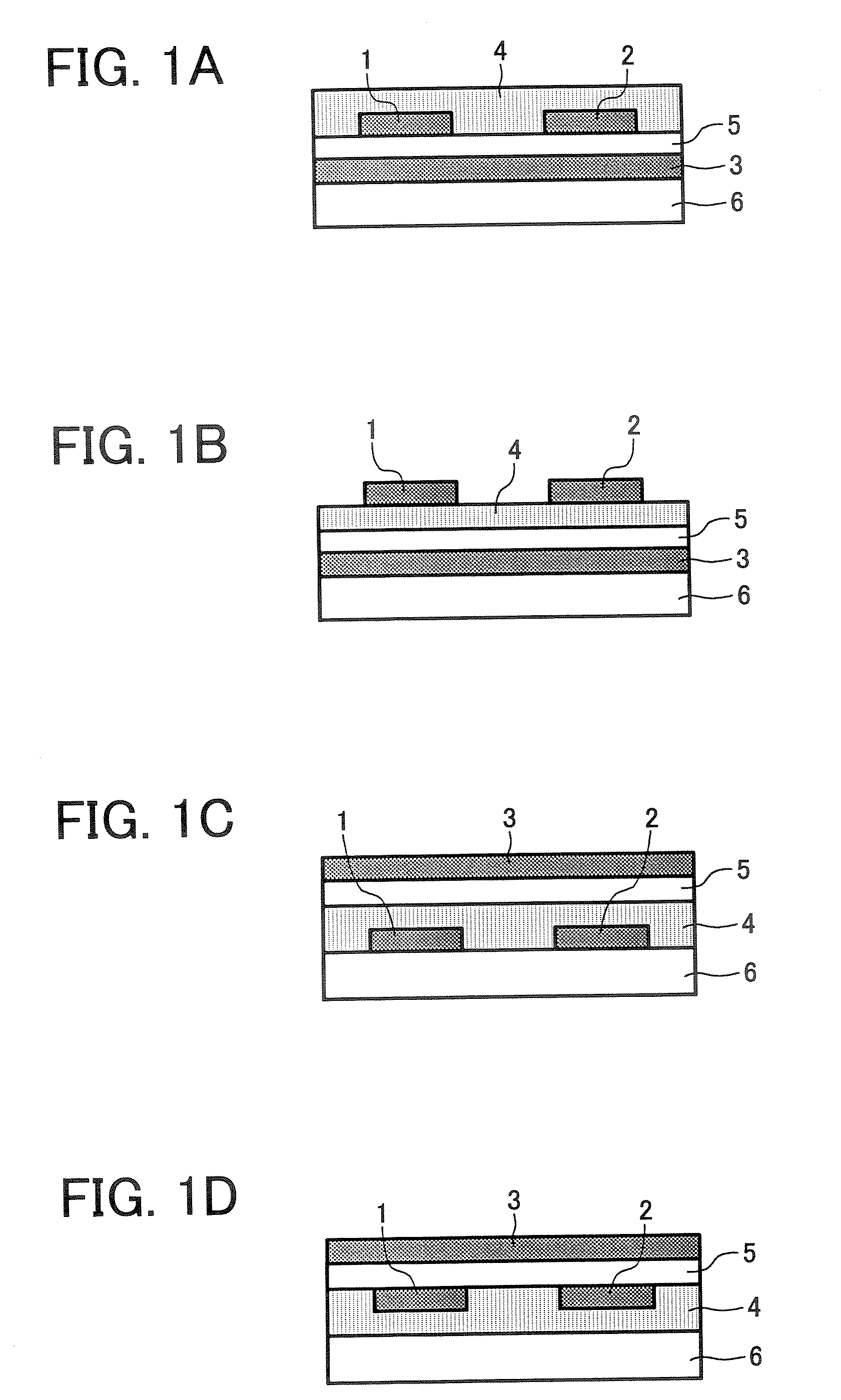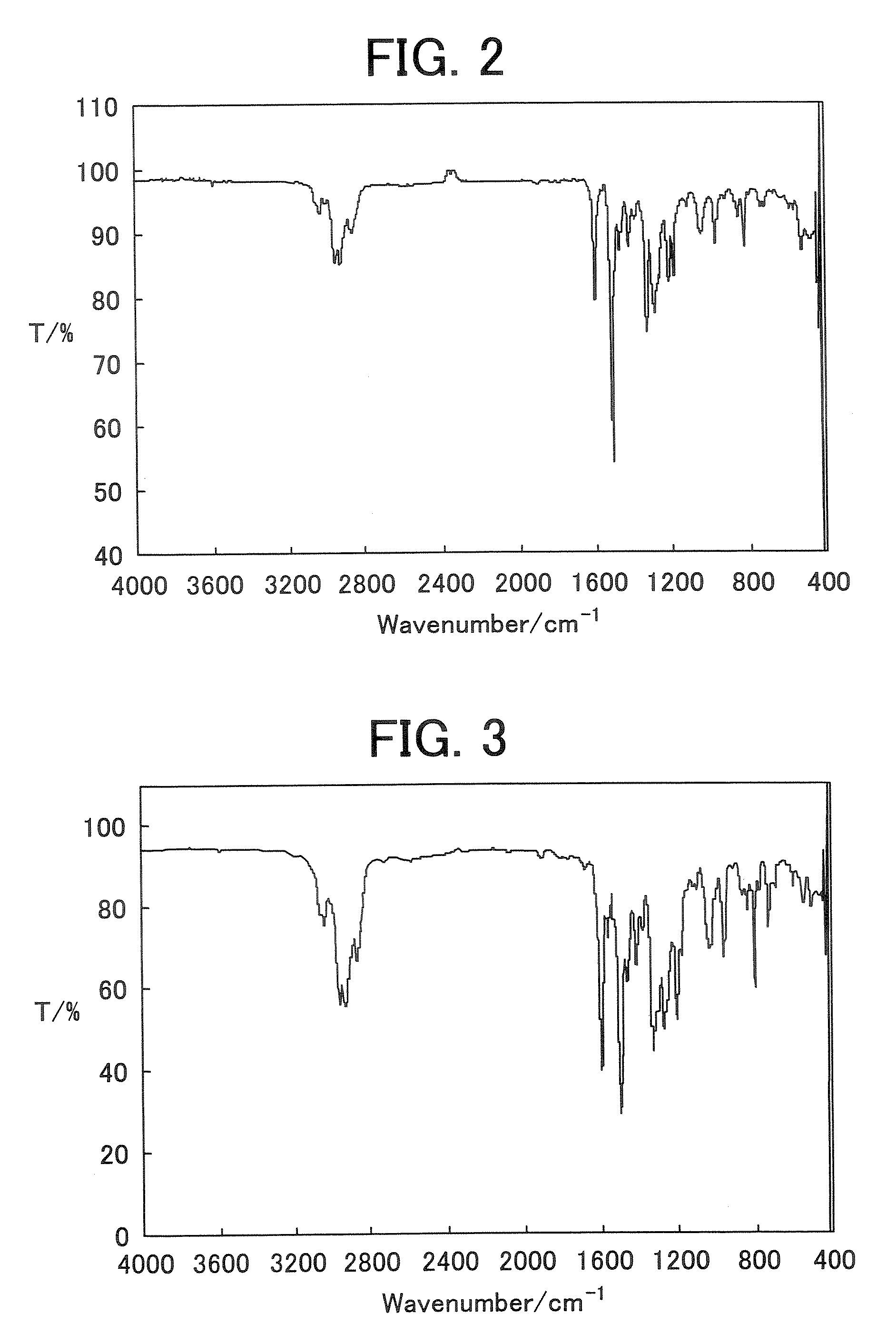New aryl amine polymer, thin film transistor using the new aryl amine polymer, and method of manufacturing the thin film transistor
a technology of aryl amine polymer and aryl amine, which is applied in the field of new aryl amine polymer, thin film transistor manufacturing method, and aryl amine polymer, which can solve the problems of difficult purification of materials, vital stability of layers, and long time-consuming and laborious, and achieves excellent carrier mobility, high on-off ratio, and high preservability.
- Summary
- Abstract
- Description
- Claims
- Application Information
AI Technical Summary
Benefits of technology
Problems solved by technology
Method used
Image
Examples
example 1
Synthesis of Polymer 1
[0168]
[0169] A polymer 1 was prepared by: placing 0.852 g (2.70 mmol) of the dialdehyde illustrated above and 1.525 g (2.70 mmol) of the diphosphonate illustrated above in a 100 ml four-neck flask; performing nitrogen gas replacement; adding 75 ml of tetrahydrofuran to the mixture; to the solution, dropping 6.75 ml (6.75 mmol) of a tetrahydrofuran solution of 1.0 mol dm−3 of potassium t-butoxide; stirring the solution for two hours at room temperature; adding benzylphosphonatediethyl and benzaldehyde to the resultant in this order: further stirring for another two hours; adding about 1 ml of acetic acid to the resultant; after finishing the reaction, washing the solution with water; evaporating the solution to eliminate the solvent under reduced pressure; and then reprecipitating the resultant by dissolving the resultant in a tetrahydrofuran and methanol solution for purification thereof. The weight of the thus obtained polymer 1 was 1.07 g and the yield there...
example 2
Synthesis of Polymer 2
[0174]
[0175] A polymer 2 was prepared in the same manner as illustrated in Example 1 using 419.5 mg (1.00 mmol) of the dialdehyde illustrated above and 564.5 mg (1.00 mmol) of the diphosphonate illustrated above. The amount of the thus obtained polymer 2 was 518.3 mg and the yield thereof was 62%.
[0176] Elemental analysis value (theoretical value): C, 85.18% (85.55%); H, 8.03% (7.63%); N, 2.10% (2.08%).
[0177] The Glass transition temperature of the polymer 2 obtained using differential scanning calorimetry (DSC) was 133° C.
[0178] The polystyrene-conversion number average molecular weight and weight average molecular weight measured by gel permeation chromatography (GPC) were 39,200 and 116,000, respectively.
[0179] Infrared absorption spectrum (NaCl cast film) of the polymer 2 is shown in FIG. 3.
example 3
Synthesis of Polymer 3
[0180]
[0181] A polymer 3 was prepared in the same manner as illustrated in Example 1 using 1.00 g (2.40 mmol) of the dialdehyde illustrated above and 1.35 g (2.40 mmol) of the diphosphonate illustrated above. The amount of the thus obtained Polymer 3 was 1.32 g and the yield thereof was 82%.
[0182] Elemental analysis value (thoretical value): C, 85.33% (85.55%); H, 7.86% (7.63%); N, 2.30% (2.08%).
[0183] The glass transition temperature of the polymer 3 obtained using differential scanning calorimetry (DSC) was 151.9° C.
[0184] The polystyrene-conversion number average molecular weight and weight average molecular weight measured by gel permeation chromatography (GPC) were 44,400 and 118,000, respectively.
[0185] Infrared absorption spectrum (NaCl cast film) of the polymer 3 is shown in FIG. 4.
PUM
| Property | Measurement | Unit |
|---|---|---|
| temperature | aaaaa | aaaaa |
| surface roughness | aaaaa | aaaaa |
| treatment temperature | aaaaa | aaaaa |
Abstract
Description
Claims
Application Information
 Login to View More
Login to View More - R&D
- Intellectual Property
- Life Sciences
- Materials
- Tech Scout
- Unparalleled Data Quality
- Higher Quality Content
- 60% Fewer Hallucinations
Browse by: Latest US Patents, China's latest patents, Technical Efficacy Thesaurus, Application Domain, Technology Topic, Popular Technical Reports.
© 2025 PatSnap. All rights reserved.Legal|Privacy policy|Modern Slavery Act Transparency Statement|Sitemap|About US| Contact US: help@patsnap.com



